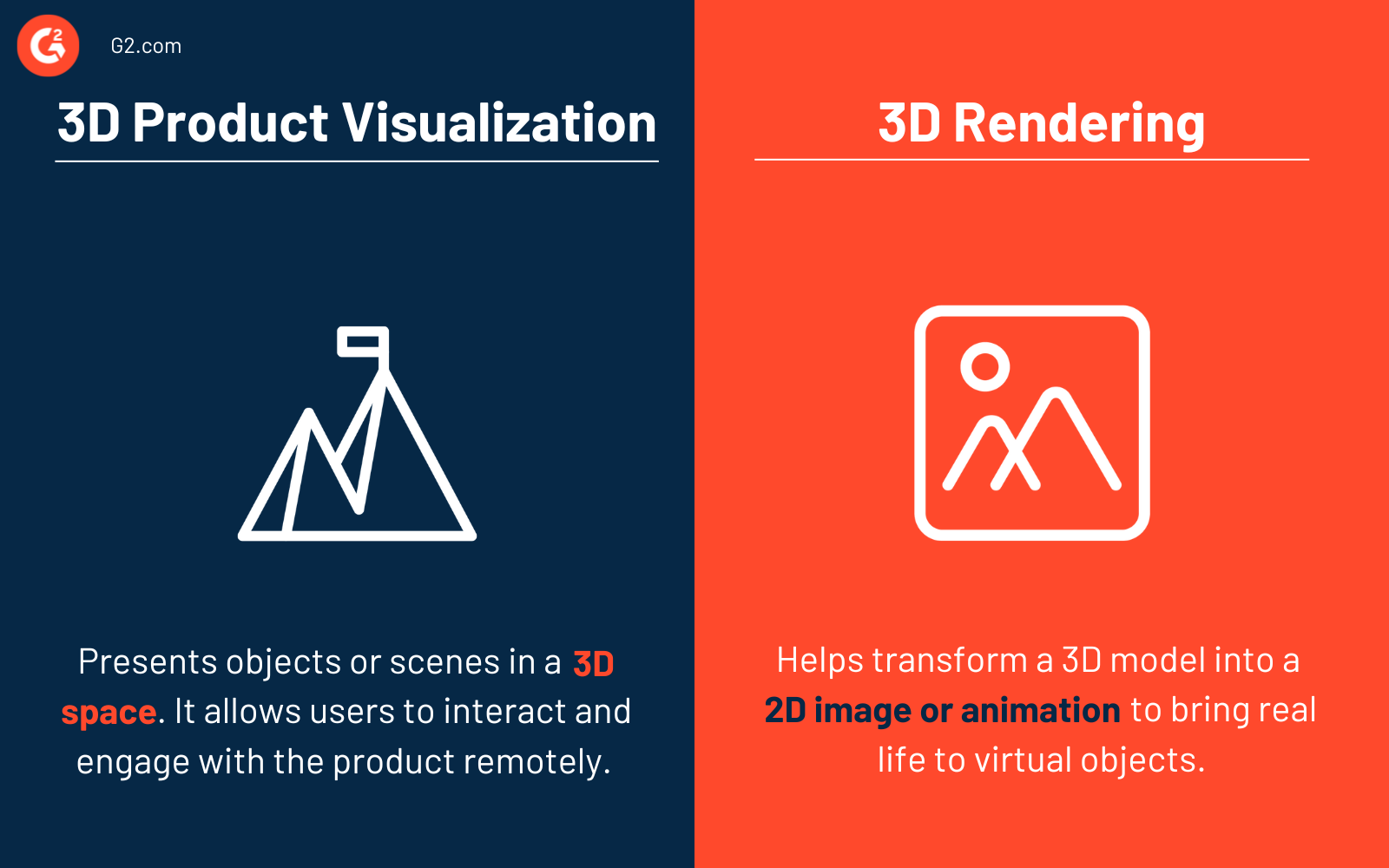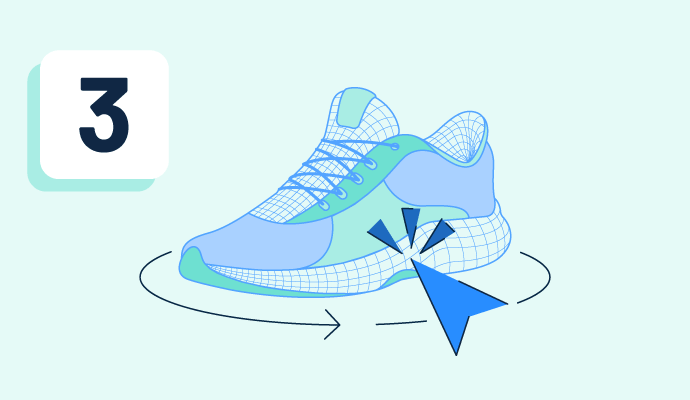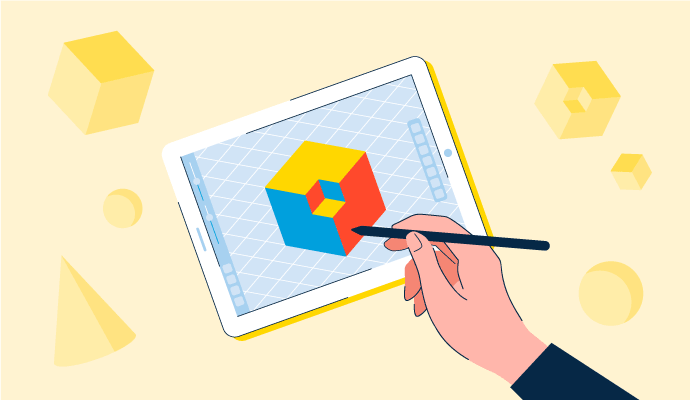What is 3D product visualization?
3D product visualization is a three-dimensional visual model of a product. It allows organizations to showcase products effectively rather than using simple images and text.
Professionals in the e-commerce space, designers, and salespeople often use it to present products they’re selling on their websites and platforms to improve buyers' experience.
Visual product customization software allows buyers to customize and configure products they’re interested in purchasing online. Designers can leverage virtual reality features to create interactive product demos to highlight the product’s true value.
It allows businesses to create immersive and interactive product experiences. Customers can visualize the products they want to buy from all angles.
3D product visualization benefits
A digital 3D model of a product can help businesses make a lasting impression on customers’ minds. It provides them with a more realistic shopping experience. Below are some notable benefits of 3D product visualization.
- Consumer confidence: 3D visuals of products or services help customers closely inspect the product or service digitally. Customers can avoid buying anxiety as they can toy with the 3D models.
- Fewer returns: 3D digital images allow users to see what they would buy and fully understand the product or service. The return rate is very low since there’s no room for assumptions.
- Eye-catching marketing: Users can create captivating digital models to appeal to customers' buying sentiments visually. It makes the product memorable.
- Precise and real-life evaluation: Potential customers can examine even the tiniest details of products or services in a 3D image or model. It allows users to test various configurations and evaluate functionalities in detail.
3D product visualization techniques
3D product visualization closes the gap between expectation and reality. Each project needs a different approach. Designers can decide on an appropriate technique based on the type of project. Below are some common 3D visualization techniques popular among AR/VR designers.
- The photorealistic technique gives a hyper-realistic 3D image. Developers make patterns, textures, lighting, and shadows as close to real life as possible.
- The minimalist technique doesn’t focus much on the lighting and textures. Engineers who care more about functionality rather than appearance use it.
- The futurist technique aims to transform real-world depiction into something entirely new. It creates new thoughts that can surprise the viewers. Video games are one such example that uses a futuristic technique.
- The optimistic technique places the product in an ideal or optimal setting. It gives the product a new, enhanced look in the best lighting condition.
Use cases of 3D product visualization
Businesses use 3D visualizations of their product to provide a unique online experience to consumers, either through a static or interactive visual. Here are some areas 3D product visualization supports:
- Product manufacturing: 3D visuals serve as a digital prototype and are essential to the development process. It helps developers understand the initial product idea and turn it into a mock-up 3D image.
- Product marketing: People no longer rely solely on text descriptions of a product. They expect to understand every detail before purchasing the product. A 3D product visualization provides the exterior look and helps customers with minute interior details.
- Architecture and interior design: Architects map out the structural elements of a project and determine potential issues. They share their work with clients to get approval. Clients get an idea of a completed project's appearance through a 3D model.
3D product visualization vs. 3D rendering
It’s common to confuse 3D product visualization with 3D rendering, but the two have key differences.

3D product visualization presents objects or scenes in a 3-dimensional space. It allows users to interact and engage with the product remotely. It goes beyond real images, enabling users to explore and play with virtual environments in real-time.
3D rendering helps transform a 3-dimensional model into a 2-dimensional image or animation. It helps bring real life to virtual objects, making them look like they exist in the real world. Professionals in architecture, industrial, and automotive design, or interior designers use it often to show how their 3D models will look in the real world.
3D product visualization focuses on interactive experiences and engagement. It makes updating data on the cloud easier, allowing real-time changes. On the other hand, 3D rendering concentrates on static images and animations with high-quality visuals. It requires creating new images for any updates.
Learn more about 3D rendering and how to make realistic 3D images.

Sagar Joshi
Sagar Joshi is a former content marketing specialist at G2 in India. He is an engineer with a keen interest in data analytics and cybersecurity. He writes about topics related to them. You can find him reading books, learning a new language, or playing pool in his free time.

